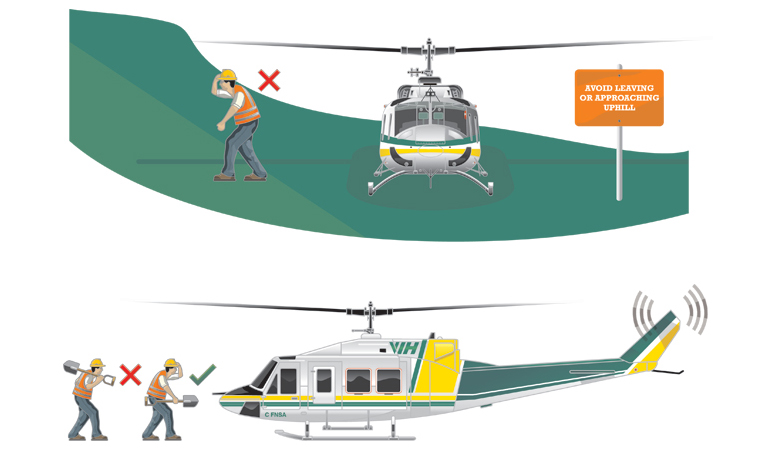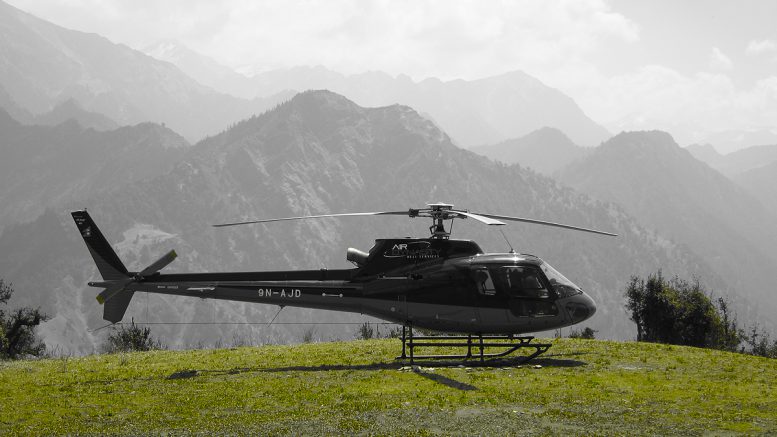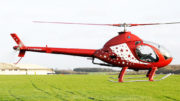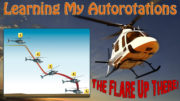Fly-In Hunting Trips
Helicopters can get you into some of the best hunting grounds that are usually considered “difficult to access” quickly and out just as fast when you’re in trouble. Helicopters a great piece of modern machinery for helicopter hunting trips but they can be bad for your health if you become complacent about the safety procedures surrounding them.
THE HELICOPTER
Helicopters come in various shapes and sizes, and fly because air travels more quickly over the tops of their blades than below them, creating lift. Direction of travel is controlled by tilting the blades, and the spinning of the machine on its axis is countered by the tail rotor.

There are four main types of helicopters you are likely to come across, each with its own characteristics. For hunters to make informed decisions I’ve listed some specifications below, including capacities.
HELICOPTER HUNTING – WEIGHING THINGS UP
One important thing to consider when you’re booking a helicopter is the weight of the meat or trophies you might be bringing back from a successful hunt. You won’t get a good reception if you ask a Robinson R22 helicopter pilot expecting just yourself and your gear to fly several big, heavy deer out as well. It’s better to go in as light as possible to avoid this potential problem.

The Robinson R44 can handle 2-3 passengers with moderate sized packs, plus approximately 75lbs of meat and/or skins.
As a general rule I have gear I definitely need for the trip and a separate luxury pile I can take if there’s room and the weight limits aren’t pushed – some hunting parties do get mixed up about which pile to put their priorities on.
It is amazing what some helicopters are capable of lifting, search YouTube “helicopter heavy life” and you’ll see what I mean. When making the booking, remember that every machine and flight is different and one pilot may not have the skills and/or flying experience that another has acquired.
Altitude can be a factor here also. If you’re flying high into alpine country the thinner air up there will reduce your helicopter’s lifting capacity compared to what it would be thousands of feet below in a river bed.
AVIATION TIME SCHEDULES, WEATHER AND SAFETY BRIEFINGS
The worst people at safety briefings are those who’ve flown before and are now “experts”. Listen to the briefings. Even though you have flown in the past, there’s valuable information in there – and usually different and specific to each individual hunt. Only a few months ago I was flying over Lake Tahoe when I thought… where are those life jackets again?
Emergency information will be given and should include where the first aid kit and life jackets are kept, how to operate the emergency locator beacon, and where to find the power shutoff and fuel pump switches.

When you’re booking a chopper keep in mind that meat and skins are heavy – you may want to lift out more weight than you brought in
Before flying is the best time to discuss a specific site you want to be dropped at. This way a pilot can consider conditions and landing sites before rather than have to think while he’s flying the machine. Most operators will strive to fit in with your plans but in the end they have the final call on where they can put you.
They may even drop you in a better place with high animal numbers if you’re lucky. Time schedules are variable with helicopters and can change without warning. Flights may be delayed due to weather, darkness, job delays or even breakdowns.
“…keep long items below your shoulder height, especially rifles … never approach a helicopter from the uphill side or where you are not in plain view of the pilot…”
As a rule, be ready in case of an early pick up and don’t get too stressed if you don’t hear the drone of the helicopter at your agreed pick up time, especially in poor weather conditions. Weather plays a big part in a helicopters flight capacity and it can be a real waiting game before a flying window opens up.
Helicopters cannot fly on instruments alone in the mountains, so fog and cloud are a real problem when helicopter hunting. They can fly in light rain but it adds weight, while heavy rain pits the blades and can affect the aerodynamic flow and lift.

Helicopter doors are made ultra light – it’s not good to slam them open or force them shut
Light wind is actually good for flying but gusty or strong winds can buffet the helicopter around. High winds over mountains can cause a cascade of wind going over the lee side and pushing down on the top of the machine. Most helicopter hunting operators prefer to fly mornings or late in the day when the air is denser and more settled, creating better lifting capacity.
As mentioned, altitude also affects the lifting capacity of a machine, so don’t be surprised if you are requested to lighten up on gear if you are planning to fly over a high mountain range.
APPROACHING, LOADING AND ENTERING HELICOPTERS
Always wait for confirmation from the PILOT ONLY before approaching and if possible keep about 40 metres away from a landing zone. Rotor wash can exceed 60mph and can lift rocks, dirt, sticks, and snow, and blast the area with them. Shield your eyes and hold any loose items firmly. Put heavier gear on top of lighter stuff and never chase items shifted by rotor wash.
The two main hazards to be aware of are the main rotor disk and the often virtually invisible tail rotor running at thousands of revs-per-minute. The tips of the rotors move the fastest and the rotors themselves tend to sag downwards as the power goes off, so take care when you’re clearing this point both approaching and leaving.

When you’re leaving a helicopter, stay low and move forward – the tail rotor is still at full speed and cannot be seen, even by the camera lens.
If a pilot sees well-secured gear in a tight landing spot he may even put the machine down damn near on top of you, close to the rotor centre which is the highest and safest point.
When you’re approaching a helicopter keep long items below your shoulder height, especially rifles. Bend your body forward especially on sloping ground, snow, or when the blades are turning slowly (they will droop down somewhat with decreased centrifugal force).

On a slope never approach a helicopter from the uphill side or where you are not in plain view of the pilot. If you are forced to approach from the rear, remember you have the tail rotor to contend with, and also a blast from the jet turbine unit or hot engine exhaust can cause serious burns. Loading gear is best left to the pilot or crew, they will be able to gauge the weight of each piece and stow it, keeping the weight evenly distributed.
IN-FLIGHT CONSIDERATIONS
Once inside the machine put your seatbelt on as soon as possible. You will find headsets on the centre portion between the seats. Most typical helicopters are very noisy and communication with the pilot will be difficult without them. Pilots are touchy about their doors. These are fragile and expensive items and must be closed gently, preferably by the pilot.
If you do close or open a helicopter door do it with the utmost care, never slamming or letting the door fly open to the limit of the gas struts. The locking mechanism is a simple lever latch and takes little force to use. During flight, try not to touch anything, move around or drop anything.

Helicopter hunting pilots are very nervous of any sort of unusual noise in a machine, especially tapping or knocking sounds! One thing that is always omitted from pre-flight briefings is the sound of the RPM alarm.
For virgin flyers this flashing Beep! Beep! Beep! just before lift-off can be disconcerting. This alarm lets the pilot know that the machine has reached flight rpm. During flight this acts as a stall alarm and this is when you don’t want to hear it!
EXITING AND UNLOADING
Before exiting a helicopter check all loose items such as hats are held securely or stuffed down the front of your jacket. After the machine has settled and wound down to idle you can remove your seatbelt and start to exit – usually under instruction by the pilot. Remember again not to exit toward the rear where the tail rotor or exhaust awaits, and never uphill.
The helicopter hunting pilot will help you unload your equipment but remember to keep your posture slightly bowed and do not extend long items such as poles, your arms or firearms above your shoulders. After all gear is removed, hold any items down that may be blown around from rotor wash and shield your eyes as the machine lifts off and departs.
“Rescue crews are some of the most highly trained individuals in the trade, and must be able to adapt to every possible situation.”
HELICOPTER SPECIAL PROCEDURES

Watch those tail rotors – they’re almost invisible at speed – KEEP WELL CLEAR
There may be situations where you have to enter a machine while it’s hovering or under power; this may be a rescue scenario, or due to unsuitable landing terrain, or when something is attached to the hook. Keep your body weight toward the centre of the machine and introduce your weight gradually, allowing the pilot to counter the weight shift.
At this point the pilot may manoeuvre the machine away immediately as a safety measure, so carefully get seated and fasten your seatbelt as soon as practicable. Landing in snow comes with hazards to passengers and the machine.
Soft or wet snow is a particular issue as it allows the machine to sink down and sticks to the undercarriage. This causes imbalances and reduces the space between the rotors and terrain. It can also cause decreased visibility when rotor wash blows the snow around.
HELI-RESCUE
Accidents can and do happen anywhere in our bush or mountains, and you may be one of the many people each year who has to be rescued. Rescue crews are some of the most highly trained individuals in the trade, and must be able to adapt to every possible situation. Helicopters may come from the commercial sector, military or from Life-Flight Service.
“Emergency information … should include where the first aid kit and life jackets are kept. They should also tell you how to operate the emergency locator beacon, and where to find the power shut-off and fuel pump switches.”
The winch is the tool of choice in difficult terrain or over water, and these are generally around 250 feet long. They usually come with a crewman who will direct you about what to do and when to do it. Do as much as you can to help yourself in a rescue.
This means if you feel you can move yourself on to a stretcher or stand for the crewman to make your rescue easier without making your situation worse you should try.
During a rescue in low light or darkness the pilot may be wearing night vision gear. These amplify any available light so do be cautious not to signal or shine a torch beam directly at him while he is on final approach. If a machine is over water, there may be a significant static charge transferred to you as you grab part of the machine or winchline – a constant danger for Navy helicopters.

At the end of a hunt an incoming chopper is always a welcome sight, but bad weather can delay your flight. Be prepared to wait.
This may also be the case when lowering a crew member. Let them or the equipment touch the ground first before you touch them. During a rescue situation the crew will prepare you for flight and may spend some time making sure that you are medically stable before flying you out, even though you may be anxious to get going.
Although emergency rescue is free to you courtesy of the emergency services it is a costly process, approximately $3200 per hour just for the machine. Life-Flight, although partially funded by the government, mainly runs on donations, so if you are able please give your support.
They do an excellent job and without them peace of mind in the mountains would be gone. After your rescue don’t be afraid to go and see the crew at their base, many times they don’t even get so much as a “thank you”. Showing your appreciation is great PR for hunters and good manners for anyone.

Always approach helicopters from the downhill side like this, and stay out in front so that the pilot can see you coming.
| HELICOPTER HUNTING – ROBINSON R22 HELICOPTER | |
|---|---|
| LIFTING CAPACITY | 390lbs |
| HUNTING EQUIVALENCY | 1 PASSENGER, MODERATE PACK AND MEAT (75lbs) |
| FLYING SPEED | APPROX 110 MPH |
| RUNNING COSTS PER HOUR | APPROX $400 |
| HELICOPTER HUNTING – ROBINSON R44 HELICOPTER | |
| LIFTING CAPACITY | 820lbs |
| HUNTING EQUIVALENCY | 2-3 PASSENGERS, MODERATE PACK AND MEAT (75lbs) |
| FLYING SPEED | APPROX 135 MPH |
| RUNNING COSTS PER HOUR | APPROX $700 |
| HELICOPTER HUNTING – HUGHES 500 D/E HELICOPTER | |
| LIFTING CAPACITY | 1520lbs |
| HUNTING EQUIVALENCY | 4 PASSENGERS, MODERATE PACK AND MEAT (75lbs) |
| FLYING SPEED | APPROX 175 MPH |
| RUNNING COSTS PER HOUR | APPROX $1200 |
| HELICOPTER HUNTING – SQUIRREL HELICOPTER | |
| LIFTING CAPACITY | 1690lbs |
| HUNTING EQUIVALENCY | 5-6 PASSENGERS, MODERATE PACK AND MEAT (75lbs) |
| FLYING SPEED | APPROX 140 MPH |
| RUNNING COSTS PER HOUR | APPROX $1650 |









Be the first to comment on "Helicopter Hunting Trips"